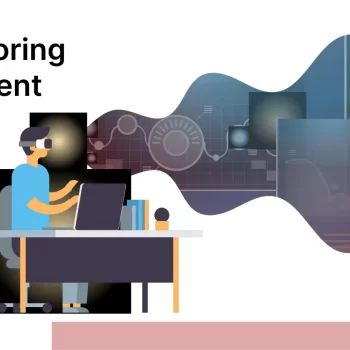The IT department designs, implements, and maintains the technology backbone of any enterprise’s operations. Their decisions about systems architecture, software deployment, and security directly influence the daily tools and platforms the customer success team uses. In turn, the customer success team, constantly interacting with clients, provides invaluable feedback on system functionalities, performance issues, and user interface, which can guide IT in optimization and troubleshooting efforts.
By integrating the IT team’s technical prowess with the customer success team’s on-the-ground insights, enterprises can align software deployments with user needs, that system downtimes or glitches are preemptively addressed, and that this technological backbone remains agile and responsive. This symbiotic relationship is foundational to improved operational performance and customer satisfaction.
Related article: What is a Customer Success Manager: Responsibilities, skills, and qualifications?
Benefits of a unified approach: Problem-solving and opportunity identification
Today, when data drives decisions and customer satisfaction dictates success, the importance of a holistic approach to problem-solving and opportunity identification cannot be overstated. Enterprises that combine the expertise of diverse teams, harnessing both technical know-how and customer-facing insights, position themselves at the forefront of innovation and responsiveness.
This powerful combination of perspectives accelerates solution finding and unearths untapped avenues for growth and performance. By prioritizing a unified strategy, enterprises can reap several multifaceted benefits:

Comprehensive insights
Enterprises gain a more robust and detailed understanding of product performance by seamlessly integrating technical viewpoints with direct customer feedback. This dual-perspective approach takes care of every aspect, from backend functionality to front-end user experience, and is scrutinized and optimized.
Accelerated problem resolution
Pooling resources from IT and customer success teams streamlines the troubleshooting process. With technical experts working hand-in-hand with those who understand client needs and experiences, solutions are found faster and more aligned with end-user expectations.
Enhanced customer experience
In a unified approach, the goal is always to drive seamless user experiences. By keeping customer feedback in mind, the resultant products or services are technically robust and tailored to user preferences and needs.
Informed decision-making
When direct customer insights inform decisions, they are more likely to resonate with the target audience. When shaped by ground-level feedback, IT strategies and priorities lead to more impactful and user-friendly solutions.
Opportunity identification
Understanding the challenges and needs of customers is paramount. With this knowledge, IT departments can devise innovative solutions to address these pain points, paving the way for product enhancements or even new product offerings.
Resource optimization
Resource deployment is more strategic when both teams have aligned objectives. Instead of working in silos, teams collaborate, reducing redundancies so that every effort is directed towards a shared, overarching goal.
5 best practices for inter-departmental communication
- Regular sync-up meetings: Establishing routine check-ins between IT and customer success teams is vital. These meetings are platforms to discuss ongoing projects, emerging challenges, and feedback from both ends. Regular interactions cultivate mutual trust, fostering a collaborative spirit and making sure no pertinent issue goes unaddressed.
- Clear communication protocols: Smooth communication is the backbone of any collaborative effort. Using standardized terminologies is essential to avoid misinterpretations. By steering clear of jargon and industry-specific terminology, teams can be sure that messages are conveyed and understood in their intended context, minimizing the potential for confusion.
- Open feedback channels: A successful partnership thrives on transparent communication. Creating an environment where both teams feel empowered to share feedback, concerns, and suggestions without hesitation is paramount. This openness paves the way for proactive problem-solving and continual process improvement.
- Joint workshops: Organizing combined training sessions beyond regular meetings can prove invaluable. These workshops promote a deeper understanding and empathy by immersing each team in the other’s challenges, tools, and methodologies. They facilitate cross-functional learning, enabling each department to better appreciate the complexities and demands of the other.
- Collaborative project management: Using shared platforms for task assignments and project tracking is crucial. When both teams have visibility into project progression, potential roadblocks, and milestones, it leads to better alignment of goals and priorities. Such transparency not only streamlines workflow but also bolsters accountability and mutual respect.
Related blog: Transforming Customer Service: Harnessing the Potential of Natural Language Processing
How shared platforms are better for IT and customer success visibility
Shared platforms act as the glue binding IT and customer success teams. These platforms offer a centralized dashboard where both teams can monitor real-time data, track customer interactions, and gauge system performance. By accessing the same data sources and analytics tools, teams can speak the same language, making collaboration more fluid.
Moreover, these shared platforms become the breeding ground for innovation. When IT sees firsthand the challenges customers face or the feedback they provide, it can proactively develop solutions. On the flip side, customer success teams, armed with technical insights, can set realistic customer expectations and provide better support.
Ultimately, this shared space isn’t just about data and analytics. It’s about a culture of unity, where each team understands and appreciates the value the other brings, paving the way for a cohesive, integrated work environment.
Impact of feedback loops on IT and customer success teams
When correctly implemented, feedback loops serve as the lifeblood of continuous improvement. In the nexus between IT and customer success teams, these loops make the information flow seamlessly, with insights from one end shaping strategies and actions on the other.
- Iterative improvement: Continuous feedback helps refine solutions, ensuring they evolve with changing customer needs.
- Proactive problem identification: Regular feedback can spotlight issues even before they escalate, allowing for timely interventions.
- Strengthened team dynamics: Constructive feedback fosters respect and understanding between teams, enhancing collaboration.
Related blog: Customer Success vs. Customer Service: Key differences
The coming together of IT and customer success teams, for all practical purposes, bust become an enterprise-wide mandate. By uniting their strengths, establishing clear communication channels, leveraging shared platforms, and continuously iterating based on feedback, enterprises can exceed customer expectations while streamlining their internal processes.



















